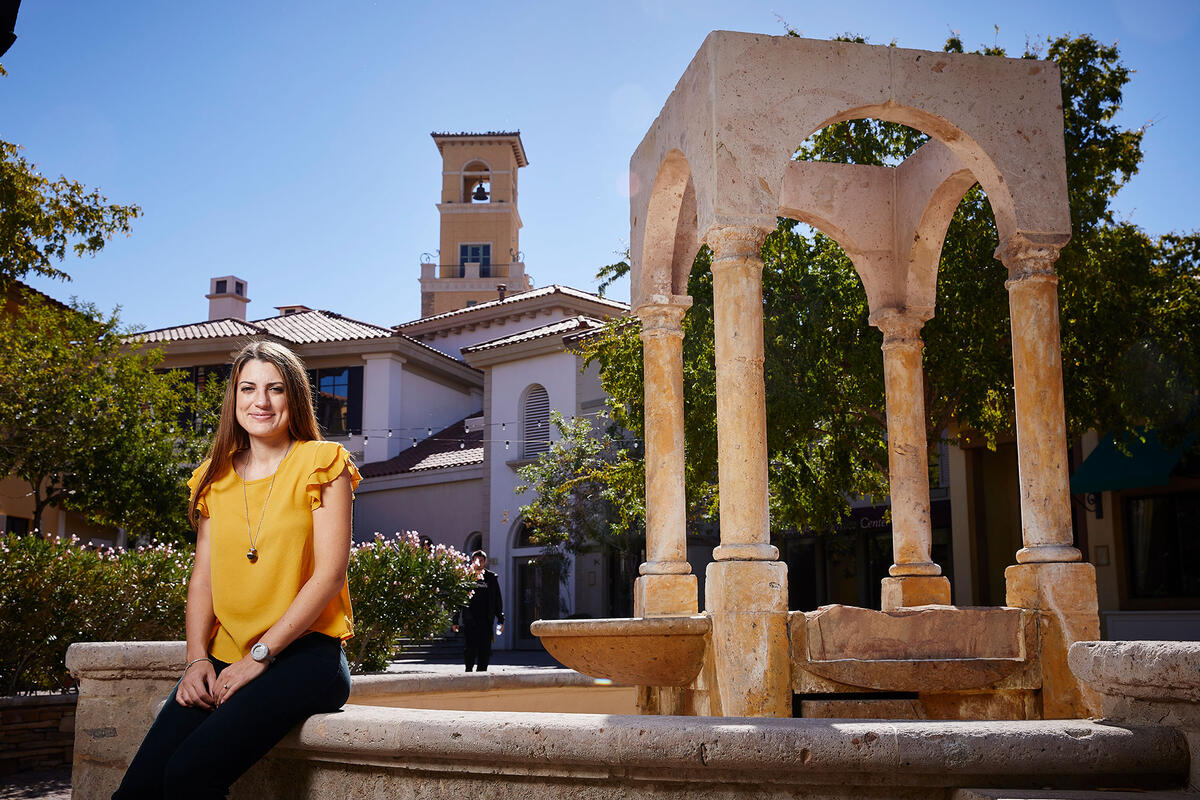For many years, sociologists, tourists, and researchers have written off Las Vegas for being a “fake” and “inauthentic” city — nothing more than a “theme park for adults.” After all, in a short walk, a Las Vegas tourist can visit an old Roman city, the Eiffel Tower, one of the Great Pyramids, a medieval castle, and New York City.
But for Marta Soligo — who was born, raised, and educated in Bergamo, Italy — a walk through the Bellagio, Caesars Palace, and the Venetian offers insights on the “Italianness” that can be found in this American city some 6,000 miles away from her native country.
Soligo, a Ph.D. candidate in sociology and graduate assistant at UNLV’s International Gaming Institute, is exploring the relationship between Las Vegas, tourism, culture, and authenticity.
“Our job as social scientists is to define the meaning that places have for the people who experience them in different ways,” she noted.
Inspired by her Italian heritage, Soligo has spent almost four years examining Montelago Village at Lake Las Vegas for her dissertation work and is now taking a more extensive look into the Italian-themed resorts on the Strip. Attractions like the Bellagio, the Venetian, Caesars Palace, and Montelago Village at Lake Las Vegas were all thoughtfully modeled after various Italian cities, villages, monuments, and traditions, so why do so many researchers write these resorts off as “inauthentic”?

The Spirit of the Place
The first step in Soligo’s research is to understand how these resorts are perceived by Italians. An ethnographer and qualitative scholar, Soligo begins her on-site interviews with a simple question: What do you think about this place?
Though Las Vegas’ representations of Italian art, cuisine, and culture might not be exactly like the Italian originals, Soligo argues that these places foster a general sense of Italianness. She points to the definition by Roland Barthes, a French literary philosopher and linguist, “Italianness is not Italy; it is the condensed essence of everything that could be Italian, from spaghetti to painting.”
Montelago Village, for example, oozes Italianness, though its architecture is based on no specific city. Though the property’s origin story is a little complicated, developer Ron Boedekker purchased the land that would later become Lake Las Vegas. His dream was to replicate the towns he saw during a trip to Italy, especially those on Lake Como. More than 30 years later, the Italian traditions continue: a typical weekend evening at Montelago Village involves couples dining al fresco, the sun setting over a Ponte Vecchio-style bridge over the lake, kids slurping up homemade gelato, and the sounds of the bell tower ringing through the streets every half hour.
That’s Italian, Soligo said — so much so that she has found that many of its restaurant, shop owners, and patrons are born-and-raised Italians. They tell her they come to this niche outdoor shopping mall on the outskirts of Las Vegas to feel like they are back home in Italy. Having completed nearly 20 qualitative interviews so far, Soligo’s preliminary findings show that nine out of 10 Italians believe that the Strip’s — and Lake Las Vegas’ — depictions of Italian culture are pretty accurate.
After all, the architects behind the Bellagio studied venues such as Villa Serbelloni in Bellagio, Italy, for more than a year before drawing up the blueprints for one of the Strip’s most popular attractions; the “dancing waters” outside the resort are modeled after Lake Como, the famous lake at the northernmost point of the Italian city.
Many of the statues and art pieces in Caesars Palace are skillful depictions of original Roman works. And at the Venetian, Soligo said, “You recognize everything in Piazza San Marco — known to many as St. Mark’s Square. The architecture, the clock tower, the Grand Canal and its singing gondoliers, everything.”
When Linguini Meets Linguistics
Italianness can be found in things that are not Italian at all, she said, so long as they sound Italian. Soligo’s research has incorporated a lengthy linguistics study. In cities across the world, people often incorrectly use the “-ini” ending to make words sound “fancier and more Italian.” But this distorts the words away from their Italian meaning. In Italy, asking for a “panini” will get confused looks; a “panini” is many sandwiches, while a “panino” is just one. The words “fettuccini” and “linguini” do not exist in Italy. It’s “fettuccine” (pronounced: fay-tu-chee-neh) and “linguine” (pronounced: lin-gwee-neh).
This phenomenon is not exclusive to Las Vegas. “I don’t know why,” said Soligo, “Maybe for fashion, for style, for food — I don’t know why. There are some not-Italian-at-all businesses have decided to make an Italian name for themselves.”
The Authenticity Debate
As cultural lines blur in an increasingly globalized world, what does it even mean to be truly authentic? Does Las Vegas offer a less authentic experience for its 2 million residents and 40 million annual tourists?
Soligo’s findings suggest that authenticity and what it means to be Italian are not confined to a specific location, but rather, they exist in the genius loci — the spirit of the place.
“As a sociologist, I’m not trying to define what it means to be authentic or inauthentic,” she said. “I’m much more interested in discovering how the definition of authenticity can vary greatly from person to person — even among Italians. What’s authentic for me as an Italian is not authentic for my grandma, who was born 80 years ago. Authenticity is subjective.”
For Soligo, Montelago Village is as authentic to Southern Nevada as it is to Italy. “You come here and you perceive the warmth; you have Italianness through the atmosphere. At first, it was hard for me to admit that this little, virtually unknown place in Las Vegas, gave me a sense of home — but it does.”



